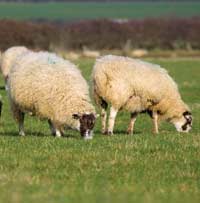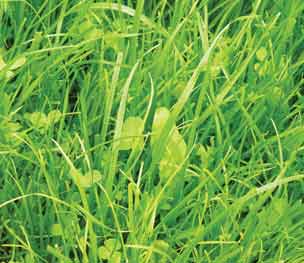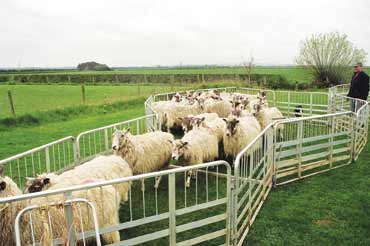Sheep handling and grazing

Have you ever wondered whether to renew or reseed pastures, questioned whether to to plough or not to plough, or incorporate some chicory in to pasture? If so, you are not alone. With more than 100 people descending on Overbury Farm, near Tewkesbury, Gloucestershire, for the first EBLEX sheep handling and grazing farm walk, clearly it wasn’t just the tea and biscuits attracting them to the event.
And at a time when many are tightening their belts, knowing what your fields can offer will allow potential in pastures to be realised, according to British Seed Houses’ Helen Mathieu.
“The biggest asset is in the soil and digging a small hole to about 30cm will tell you a lot about the organic matter. If soil compaction is identified, the soil profile can give an indication of cause, which will determine the remedy,” she said.
Ms Mathieu’s splits compaction into three different types. Capping/grazing, occurring between 0-10cm deep, machinery occurring between 10-15cm and plough plans also between 10-15cm deep.
“Where capping has occurred this can be addressed by soil aeration and ploughing, whereas machinery and plough pans can be remedied by either sub-soiling, ploughing or para-ploughing,” she said.
 |
|---|
| Swards should contain a sown species above 70%. |
Identifying species growing in the sward is also important, and according to EBLEX’s Liz Genever, swards should contain a sown species above 70%.
“A sward with above 70% of the sown species indicates it is still productive, but introducing new varieties through reseeding should also be considered. However, when sown species are below 60% then reseeding may be an option since it will increase yields, feed value and response to nitrogen.”
Pasture renewal often raises questions, like should pasture be over-seeded or fully reseeded and, if so, with what varieties. But according to Ms Mathieu, reseeding permanent pastures with good varieties can produce grass worth an extra £200/ha (£800/acre) over five years. However, over-seeding has become more popular due to costs.
“Renewing existing swards by over-seeding or slot seeding reduces the costs compared to a full reseed, with typical over-seeding costs of £175-200/ha (£70-80/acre). Over-seeding is useful where you don’t want to plough, or clover needs to be introduced, whereas reseeding offers opportunity to tackle weed, improve varieties and nutrient contents well as matching sward to growth potential. However, despite a full reseed costing £340/ha (£140/acre), it can pay off since new varieties give about 33% more yield than a typical five year old ley,” said Ms Mathieu.
SHEEP HANDLING SYSTEMS
With electronic identification in sheep imminent, having an efficient and speedy handling system will be even more necessary. But understanding sheep behaviour is necessary when looking to improve any system, according to handling system expert, Miriam Parker.
 |
|---|
| Understanding sheep behaviour when evaluating handling systems can help improve flow and sheep welfare. |
“Good handling not only improves welfare, but can save time for routine operations like tagging, weighing and worming. But it is important to remember people, sheep and the pens are all involved in a handling system and you can’t have a good handling system without getting all three bits working together,” she said.
Ms Parker explained the sheep’s visual senses and their restricted binocular vision needed be taken in to consideration. “Evaluating current handling systems by putting yourself in the position of the sheep will help identify where improvements can be made, which in many cases may be achieved simply and inexpensively.”
Location is key and positioning the handling system on a level site where there is a key draw such as fields in the distance can help improve flow through the race. Ms Parker recommended having solid sides at handling points to focus animals on where they have to go, stopping distraction from other sheep or humans.
“Creating solid sides doesn’t have to be expensive and can be done instantly by using by a sheet of sacking. Exploiting sheep’s behaviour by running sheep through a system several times, particularly if there is a food reward will also make the experience more pleasant.”
